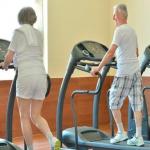Why Elders Need to Keep a Close Eye on Vision Health
Why Elders Need to Keep a Close Eye on Vision Health
It’s true; one’s vision deteriorates with age, yet keeping a close watch on eye health is for people of all ages. Elders sometimes dismiss bigger complications and threats to eye health for common problems, expecting difficulties to come with old age. But doctors and caretakers urge better vigilance. Vision is a precious gift to be enjoyed throughout one’s life despite aging.
Caretakers keep close watch for symptoms of a number of serious vision deficits, including age-related macular degeneration, or AMD, as well as glaucoma. Irritation, fuzziness, and other sensations or modifications need immediate attention. Moreover, regularly-scheduled eye appointments keep caretakers, doctors, and the elderly proactive, well ahead of unexpected illnesses.
Age-Related Macular Degeneration
Age-related macular degeneration affects the middle portion of the tissue that lines the back of the eye, making common acts such as reading increasingly difficult. Science recognizes two types of AMD, dry and wet.
The dry type of affliction makes vision hazy, reading in low light difficult, recognizing people harder, and colors appear faded and less vivid. The wet type distorts vision, makes objects appear dissimilar in opposing eyes, and fades color. Family history, obesity, and a history of smoking correlate with AMD affliction.
Unfortunately, there is no cure for AMD, but there are ways to slow its progression such as thermal laser treatment and photodynamic therapy.
Glaucoma
Glaucoma is a visual affliction that causes gradual vision loss. Pressure inside the eye damages the optic nerve that carries images to the brain. The oncoming of the affliction is slow; some people don’t realize they are living with glaucoma until it’s well advanced. A number of correlations have been found including:
-
-Family history of Glaucoma
-
-Hispanic or African heritage
-
-Previous eye injury
-
-Diabetes
-
-High or low blood pressure
Cataracts
75% of the population develops some form of cataracts by the age of 75. Common eye problems, cataracts produce halos around lights, make eyes sensitive to light, facilitate poor night vision, and incite double vision. In its earliest stages, cataracts are addressed by simply changing a lens prescription. Additionally, some combat cataracts with brighter lighting and magnifying glasses.
Diabetic Retinopathy
This affliction is a derivative of uncontrollable diabetes. Blood vessels leak, leading to reading troubles and blurred vision. Laser treatments, which address leakage, is available, yet professionals state the best way to curb diabetic retinopathy is through diet.
Those who are aging and keeping watch of signs of affliction, need assistance from friends, family, and caretakers. Stay proactive, changing contact lenses as needed, making eye appointments and addressing sudden changes in vision or reaction to light.
Some ocular professionals suggest elders keep a running diary regarding eyesight and reaction to low and high levels of light. Doing such may identify trends or signals of distress. Eye troubles come with increased age, but being dismissive of minor irritation or larger affect is bad to one’s health. Staying proactive is the best defense against eye problems.
Jon Carson is researches health issues of the elderly. He often blogs about too often ignored health topics to help the elderly improve and maintain quality of life. Visit the Lenstore website to learn more.
More to Read:
Previous Posts:
Next Posts:




